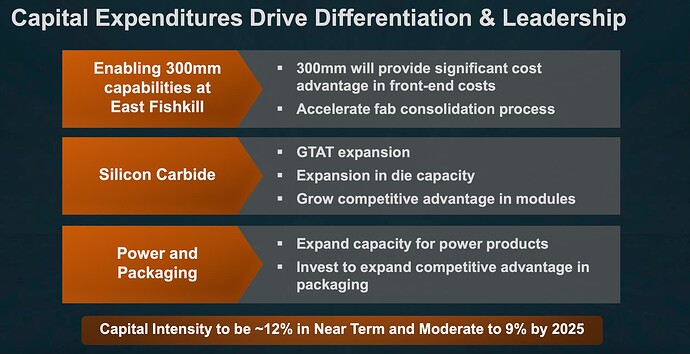I also thought it was a very strong quarter and the potential of this company is becoming ever clearer to me. I also thought the guide was strong. Revenue growth of at least 54% and net profit (exceptionally strong imo) of 28% of “at least $100m” - so at least $28m in GAAP net profit next year, up from $14.5m this year so about double.
However as with all of our companies it’s all about trying to figure out where they are going to end and how durable their growth is likely to be. What stood out for me was the concrete data points that we can now put together to get a sense of that. And the conclusion is very strong.
So let’s focus on the SiC market first. AEHR have to make disclosures about their customer concentration in their 10-K, and from that and today’s call we can derive the following for what I believe is Onsemi, their largest customer:
|
2021 |
2022 |
2023 |
| AEHR Revenue |
16.6 |
50.8 |
65 |
| Onsemi % of that |
23% |
82% |
79% |
| Testing revenue from Onsemi |
3.8 |
41.7 |
51.4 |
| Growth yoy |
|
991.0% |
23.3% |
If we add the $13.7m wafer packs sold just after year-end to them to the 2023 number above, then the Onsemi revenue comes closer to $65m and the yoy growth to 56%. I think this is closer to the truth given how close to year-end that landed.
Onsemi did the following in the the SiC market over the past couple of years:
In the first half of 2021 Onsemi did not have any mention of SiC in their investor presentations. In the second half of 2021 and first half of 2022 the message was of them positioning and investing in SiC as follows:
And from the latest Q1 2023 presentation Onsemi positions SiC very prominently and emphasises that they are poised to win, and that they had a number of important customer wins - including Tesla, VW, etc as follows:
Source:
Onsemi Q1 2023 investor prezzo
So, let’s call it $60-65m of testing revenue to AEHR from Onsemi after really only a year or so of them investing in, focusing on, and ramping SiC production.
And in the call the CEO told us that they have landed 4 more SiC customers in the year!!. So call it another 4 times $60m of revenue per annum after a year or two of those four ramping up, plus the $60m from Onsemi and we’re at $300m of SiC revenue for AEHR two or so years from now.
And then there’s the ongoing work to land
“one of the largest silicon carbide players in the world on a large wafer level benchmark and qualification for automotive and other markets.”
This customer hasn’t landed yet, but
“They have told us that their plan is to move all new production capacity to wafer level burn-in and away from packaged part burn-in.”
So once this one lands - and it is one of the biggest in the world - there will be 6 SiC customers significantly contributing to revenue, whereas this year there was only 1 customer doing so - Onsemi. And Onsemi is planning to significantly expand SiC production further.
So, by my rough back of the matchbox calcs, in two or three or so years, SiC alone could be good for, call it $300m to $400m of revenue for AEHR. At current EV of call it $1.1bn, that’s a 3x or 4x forward revenue multiple and roughly 10-15x forward P/E if we work on 28% net margin like in their guide (very, very rough, yes - but it just shows to me that the price is not exorbitant at these levels).
But that’s not the whole story, as there are multiple additional markets coming.
Moving on to one of the other markets for their products and the other big news of the day, at least for me. The CEO made explicit that he expects the silicon photonics semiconductor burn-in and stabilization market to be the big one for them after SiC. Silicon photonics are used in a variety of things, including in AI applications. This quote specifically was new, and important imo:
“We believe silicon photonics can become a significant market for wafer level test and burn-in and could become as large or larger than the silicon carbide market for our products later in this decade.”
I think the numbers were good, but the commentary about the future was the most exciting.
I certainly won’t be selling!
-WSM
(long AEHR)

